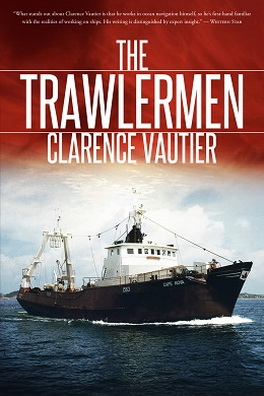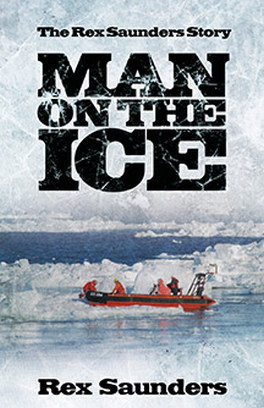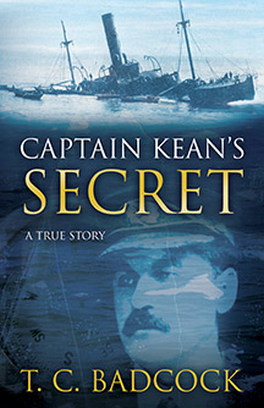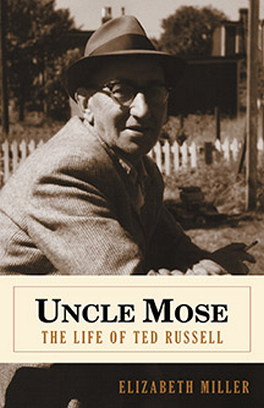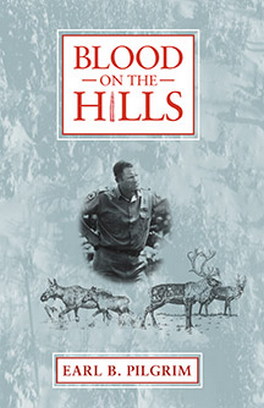The fishermen who ply their trade on the Atlantic Ocean can tell thousands of tales of daring rescue and tragic loss of life. In The Trawlermen, Clarence Vautier explores the lives of some of Atlantic Canada’s best-known sea captains. He traces the history of these men and their stalwart vessels while highlighting their more heroic—and dangerous—exploits on the high seas. Featuring Charlie Prior of Pass Island, Newfoundland, who lost his life aboard the Senator Penny in 1961 The HMCS Arleux, which was destroyed by a mysterious explosion outside Whitehead, Nova Scotia, in 1948 Captain Archie Bond of Burnt Islands, Newfoundland, and his final voyage aboard the Straights Pride II in 1990 Captain Anson Conrad of Lunenburg, Nova Scotia, and his brush with death on the Cape D’Or II in 1980 Captain James Green of Newfoundland, who was awarded the Star of Courage Award for his role in rescuing the crew of the ill-fated Fame V in 1982 The life and times of Captain Morris Nowe of Lunenburg, Nova Scotia Captain Joseph Dominix of Belleoram, Newfoundland, and his escape from the doomed trawler Gulf Gull in 1972 . . . and much more!
In 1958, the MV Sheila Patricia was fishing out of Mulgrave under the command of Captain Urial Hillier, formerly of Newfoundland but residing in Mulgrave at the time. All through the winter the trawler fished around the fishing grounds of Newfoundland and Nova Scotia, often seeking shelter in ports around Fortune Bay, and some of the Newfoundland crew would be able to see some of their family members.
By late April of 1958, she returned to Mulgrave to off-load a trip of fish at the Acadia Fisheries plant.
On Tuesday, April 29, 1958, the Sheila Patricia was resupplied with stores, and once the crew were all aboard, she set sail from Mulgrave to the fishing grounds. The crew were as follows:
Urial Hiller, Master
Maxwell Dodge, Mate
John A. MacDonald, Chief Engineer
George Barnes, Second Engineer
Walter Tarrant, Bosun
Leo Tarrant, Deckhand
Walter House, Deckhand
James Nickerson, Cook
William Dodge, Deckhand
Sandy Hayward, Deckhand
Benjamin Walker, Deckhand
Charlie Dominix, Deckhand
James Dominix, Deckhand
The fishing grounds were sometimes decided upon after leaving port, after the captains exchanged radio communications with other members of the fleet.
Shortly before noon, Captain Hillier was in his chair pondering over details of the trip, such as fishing locations and weather. On the wheel was nineteen-year-old Leo Tarrant, who was making his fifth trip. Leo’s older brother Walter was in the wheelhouse getting a snack before coming on watch at noon. Mate Max Dodge and his father, William, along with George Barnes, William Walker, Sandy Hayward, and James and Charles Dominix, were all sleeping in their cabins after just finishing their shifts.
The chief engineer was in the engine room carrying out his normal duties to keep the engine running. In the galley, Jimmy Nickerson was cooking up a feed of fish and potatoes. All of a sudden, a downdraft in the galley caused an explosion. Jimmy was standing in front of the stove but in no way had time to run from the explosion. The flame shot toward his head, searing his nose and part of his face. He was able to close to his eyes, and he was thankful he was able to escape damage to them.
Walter Tarrant heard the explosion and the cook’s cry. He leaped toward the stove to try and beat out the flame, but soon the galley was all ablaze. Walt, with his hair burning, ran for the galley door, but by the time he got it extinguished, all of his hair had burned off, and a portion of his head was also burned.
The cook decided to try and contain the fire to the galley, so he slammed the door shut, smashing a finger on his left hand in the process. Not having time to realize what had happened, and thinking about the safety of the crew, he ran to the ladder leading to the engine room. He shouted to the chief engineer that the galley was on fire and that he had to get out of the engine room at once.
The mate, Max Dodge, heard the situation unfold and was one of the first out of his bunk. He knew the trawler was full of fuel and an explosion would be very likely. Max roused his father first and then the rest of the crew. One by one they climbed the ladder from their sleeping quarters.
They passed the galley, and by this time the fire had burned through the wooden door. They barely managed to get through and exit on deck. Sandy Hayward had to take a different route and squeeze through a porthole.
As the crew stood on the forward deck, they looked at the inferno of the galley and aft accommodation. The flames billowing out of the portholes were being fed by the gale-force winds and a tank overflowing from the stack.
The cook alerted Captain Hillier, who immediately sent out a distress call letting all ships in the area know his ship was on fire, but before he could give the position, the radio went dead. That mayday call started one of the largest air and sea searches in the area for a long time.
The Sheila Patricia’s sister ship, the Acadia Fisher, under the command of Captain Phil Smith, was en route to Mulgrave from the fishing grounds when the call came in. The wooden side trawler MV Cape Dauphin out of Louisbourg was also in the area and heard the call. The converted schooner-trawler MV Margaret H M under the command of Captain Martin Picco became aware of the burning vessel as well.
In the meantime, Max Dodge formed a team in a brigade format to pour bucket after bucket of sea water on the fire. The trawler was equipped with a fire pump, but it was in the engine room, which was now inaccessible.
When the radio died, Captain Hiller came on deck and realized the severity of the situation on board. He feared the large amount of fuel on board—enough for nearly three weeks—would cause an explosion.
Captain Hillier told Max Dodge that they had to get a lifeboat overboard. He knew this wouldn’t be easy, as the trawler was out of control, making approximately eight knots. The captain knew they would have to launch the lifeboat soon, but getting it into the water, at that speed and with strong winds and a swell running, would be risky. The plan was to get the lifeboat in the water and then somehow try to turn the trawler so the remaining crew could jump in the water when the small craft was close, to be picked up by the crew members in the lifeboat.
Captain Hillier decided he and Walter Tarrant would be the two to get in the lifeboat. In the meantime, the crew tried to get the lifeboat lowered from its cradle and onto the embarkation deck. The small craft had its own derrick, but it was not an easy task. Fifteen minutes or so later, they finally managed to get the lifeboat down on the ship’s rail.
Once it was on the rail, nine crew members got aboard: Walter Tarrant, Leo Tarrant, Captain Hillier, John A. MacDonald, George Barnes, William Walker, James Dominix, Charlie Dominix, and Walter House.
Once the nine were on board, Max Dodge stood by to give the command to lower the lifeboat. But before he did, two crew members—Walter Tarrant and William Walker—jumped out of the lifeboat and back onto the deck of the trawler. The deck was so hot that Walter Tarrant’s shoes stuck to it. When he tried to pull his feet free, he slipped and burned his legs and hands.
The mate gave the command, and all the crewmen on deck offered assistance. Many wondered if they could carry out such an operation, but before long they knew the answer. The lifeboat hit the pounding sea while it was still attached to the block and tackle. A sea came and hit the lifeboat broadside, turning it over. The mate and Leo Tarrant grabbed fire axes to chop the line clear.
Three of the crew—James Dominix, Charlie Dominix, and Walter House—managed to hang on and climb back in the boat. The lifeboat was equipped with tanks for buoyancy, which caused the craft to right itself.
The crew on deck of the Sheila Patricia were tasked with the problem of the boom that was used to lower the lifeboat. Now that the lifeboat was gone, the boom was swinging back and forth, rolling from side to side.
When Max Dodge wasn’t looking, the boom swung. One of the crew said, “Watch out, Max!” but it was too late. The boom hit Max in the face, sending him backwards over the ship rail. Fortunately, he managed to grabbed the rail, where his feet dangled in the water as blood poured from his face.
Through extraordinary effort, Max managed to find the strength to climb back up on the deck. Now he had the lifeboat to worry about, so he ran toward the wheelhouse to see if he could steer toward it. He ordered William Walker to take the wheel, and they started circling the lifeboat. At the same time, two of the crew were bailing water and one was rowing.
Although the crew could circle the lifeboat, they couldn’t slow the trawler down. The engine’s speed was controlled from the engine room on a telegraph system.
As the vessel circled, lookouts were posted in hopes of seeing some of the crew in the water. They made ready to throw life jackets if necessary, but poor visibility hampered their efforts.
While the men carried out their orders, the fire continued to burn out of control. Max Dodge tried the radio again but had no luck. With no luck in finding his shipmates in the water, he ordered Deckhand William Walker to steer for land. The wheelhouse was getting hotter and hotter, and black smoke was seeping through.
Eventually, Max and William could stay in the wheelhouse no longer. They locked the wheel in position, exited the wheelhouse, and went forward on the bow. From this point on they had no control over the speed or the course of the MV Sheila Patricia. Visibility was reduced to several hundred feet.
Now the crew were standing on the forward section of the trawler. They had no idea if there were other ships—or rocks—close by. This caused a lot of concern, especially to Max Dodge, who was now in control of the trawler since the captain was gone.
Max thought of his wife and kids back home, and his father, who was standing next to him. His father had some fifty-four years at sea and had seen many a storm. He had even been shipwrecked once in his sixty-eight years.
William “Billy” Dodge had been a doryman on a schooner named the Lucy Edwina, and his dorymate was his eighteen-year-old nephew. The fog of August rolled in, and Billy, as he was known, and his nephew went astray from the schooner. After several days, his nephew could take no more and passed away. Billy survived the two-week ordeal until he was picked up by a Portuguese ship and returned home.
Max whispered to his father that he didn’t think they were going to make it, but Billy Dodge said, “Nonsense, Max, we’ll come outta this one.” Not everyone on board shared his confidence.
As the six crew members stood on the forward section of the trawler, they gathered together and poured buckets of water along the deck to keep the flames from spreading. As they were doing so, someone noticed the mast falling and shouted to give everyone a heads up. Fortunately, no one was injured as the mast and rigging tumbled over the side. The drag of the mast and rigging in the water, still attached to cables, caused the trawler to change course and veer away from land. To keep the trawler on course, the crew cut away the rigging and set the mast free.
Later that evening, the weather began to improve. This gave the crew some hope that a plane or ship would finally be able to see them. The billowing black smoke made a perfect distress signal.
There was a lull in the fire, so several of the crew made a dash for the refrigerator, where they grabbed some fruit and biscuits and cheese. Some of the men hadn’t eaten since early morning.
At nine o’clock that night, the engine finally stopped. The wind diminished and visibility improved. Max Dodge ordered his crew to make a raft so that, if the fuel exploded, at least they would have something to jump onto. The raft was constructed from checkerboards and floats from the trawl. Oftentimes the crew would have to leave the construction work of the raft and pour water aft to try and keep the heat from the fire under control.
While the crewmen were working on the deck, water gradually washed over it, and their feet grew numb from the cold. They built a makeshift stove forward and kept the fire going with rope. Leo Tarrant’s feet were so numb he couldn’t feel anything when he jabbed them with anything sharp.
All through the night the crew worked away on deck. Then around 4:00 a.m., one of the large fuel tanks exploded. Not long after, the crew of the burning trawler noticed a plane overhead. It was a Dakota aircraft from Torbay.
At the same time, a coastal reefer ship, the MV Zebrula under the command of Captain Hubert Grandy of Newfoundland, was making her way east to Newfoundland when the captain noticed the flames. He changed course at once and in no time arrived alongside the MV Sheila Patricia.
Once he was alongside, he lowered a lifeboat and some of his crew rowed over to the trawler. The six remaining crew of the doomed trawler abandoned the burning hull. These survivors were later landed at their homes, where they were given the medical attention they required.
Back on the ocean, the search continued for the lifeboat of the Sheila Patricia. The searchers prayed that the crew members in the lifeboat were still alive.
Late in the afternoon, the weather improved considerably. The MV Acadia Fisher, one of the vessels in the search, spotted a target and soon discovered it was the lifeboat that the searchers were looking for.
As Captain Phil Smith approached the lifeboat, he sounded the whistle. The crew never moved as Captain Smith came alongside the craft. They soon discovered three dead crew members from the Sheila Patricia—Charles and James Dominix and Walter House—and took them aboard the Acadia Fisher. The lifeboat was secured with a tow line, and Captain Smith set course for Mulgrave. The Acadia Fisher arrived at the Acadia Fisheries wharf at three o’clock the next morning.
The bodies were taken ashore, and examination by Dr. Peter Ferguson of Mulgrave determined that the men had died from exposure, most likely brought on when the men were dumped in the water at the launching.
The bodies of Charles Dominix and James Dominix were taken back to Newfoundland for burial. The body of Walter House was buried in Mulgrave.
As for those others who were lost, Captain Hillier was thirty-eight years old and left behind a wife and four children aged five to thirteen. The chief engineer, John MacDonald, was married as well and left behind a wife and three children. George Barnes was unmarried and aged twenty at the time of his death.
As for the burned hull of the Sheila Patricia, she was in the vicinity of Cranberry Head near Canso. A sixty-foot trawler named the MV Paulette Doreen was standing by in case a tow line had to be secured to tow the hull wherever the owners needed her. The next day, a tug from Halifax named the Foundation Vera arrived on the scene and secured a tow line to the burned-out trawler. She was later towed back to Dartmouth, where she lay at the Marine Slipway in Dartmouth, Nova Scotia.
As for the remainder of the crew, Max Dodge remained with Acadia Fisheries, but six years later he was lost off Sable Island aboard the side trawler Acadia Seahawk along with the remainder of the crew.
Max’s father, Billy Dodge, remained in Mulgrave. Leo Tarrant later went to the west coast of Canada and worked as a fisherman. He drowned in 1997 when his fishing boat, the MV Pacific Charmer, sank.
The Sheila Patricia was repaired at the marine centre in Dartmouth and later sold. She was purchased by Shaw Steamships, a well-known local shipping company that was often engaged in the seal hunt.
Fitting for any maritime bookshelf.
-- Miramichi Reader --
The story matter is fascinating and for those who love stories about the perils of life spent working on the water ‘The Trawlermen’ delivers-- The Gulf News --
